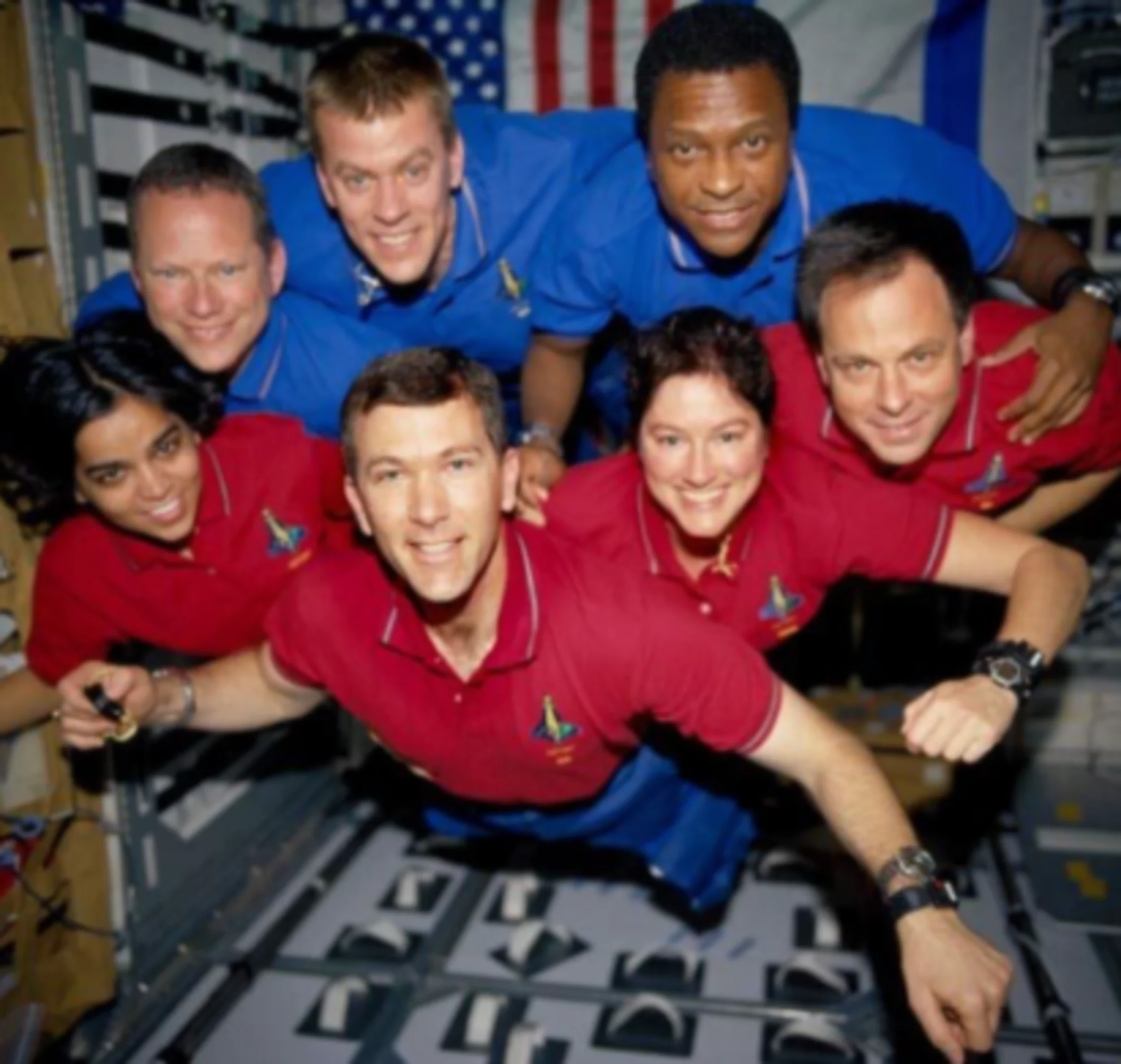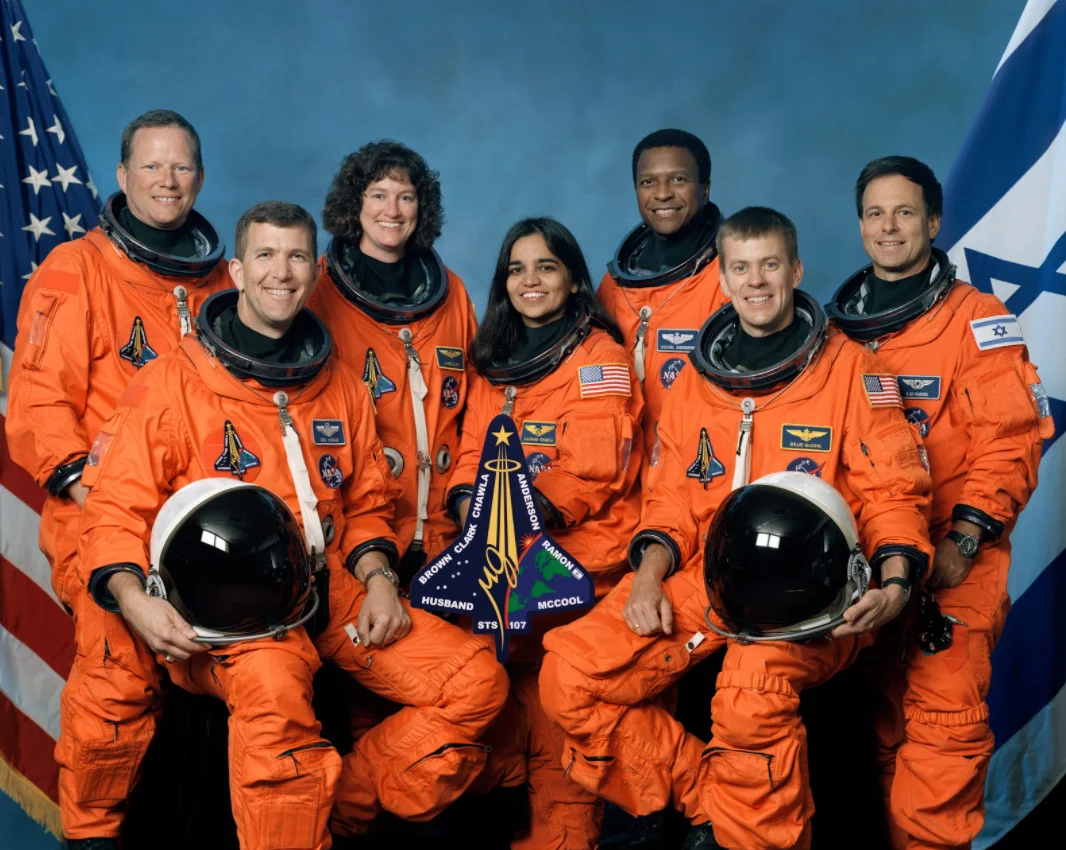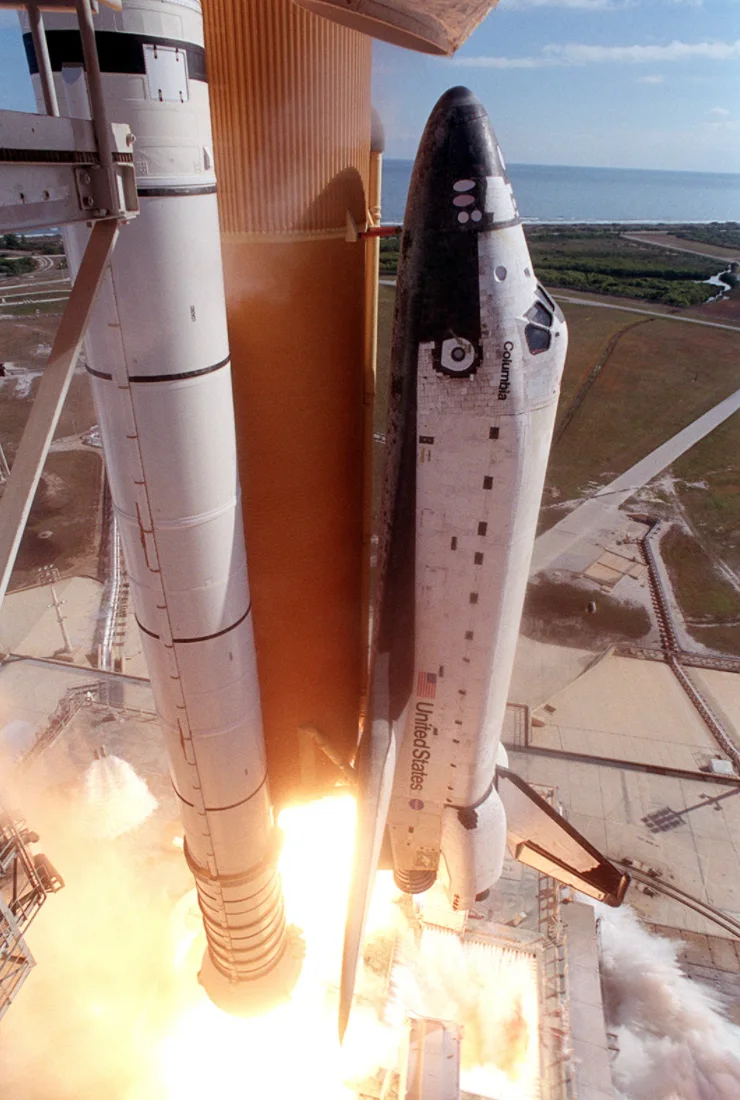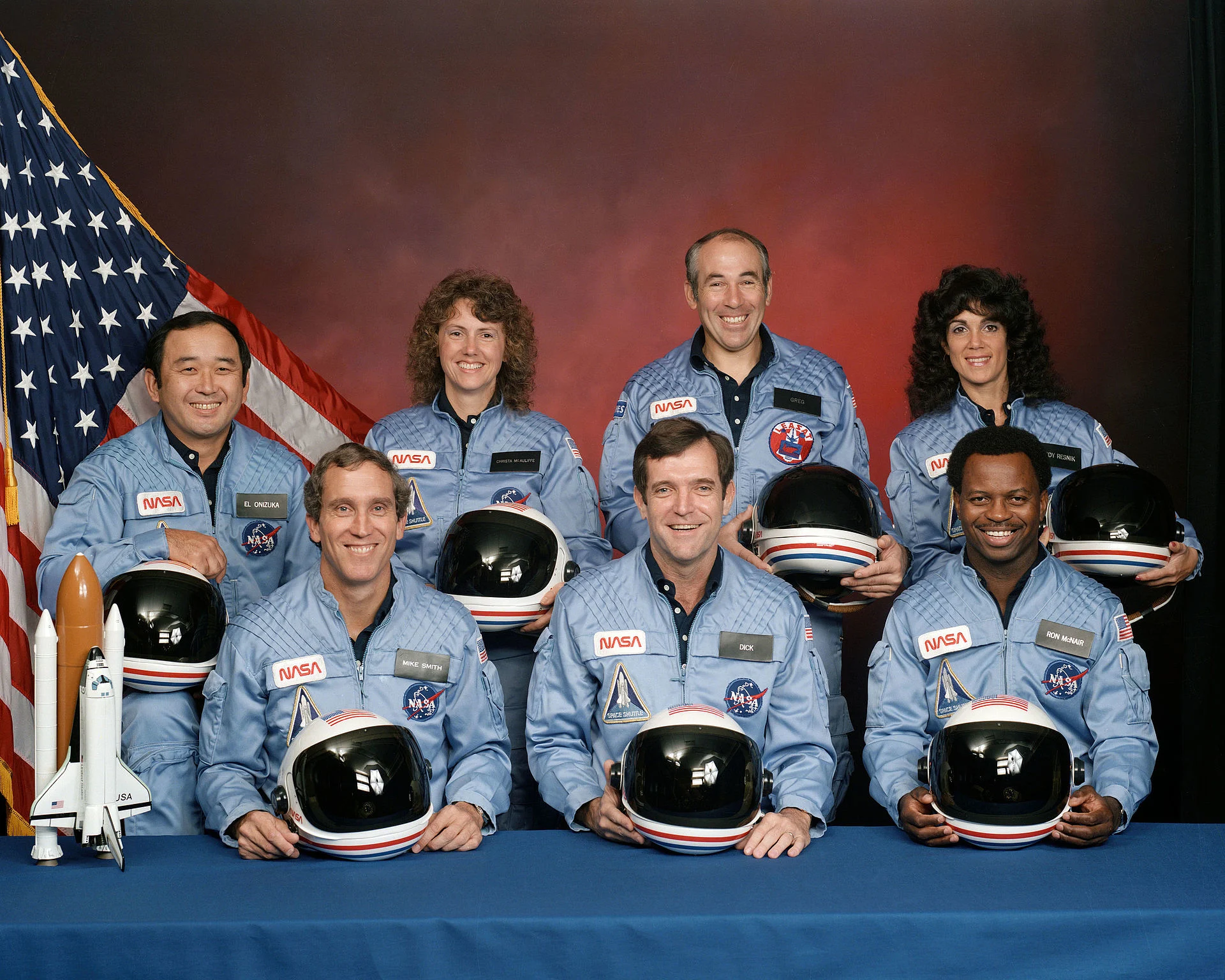
How temperature impacted the Columbia and Challenger space shuttle disasters
Both the Columbia and Challenger's malfunctions were present during take-off.
This Day In Weather History is a daily podcast by Chris Mei from The Weather Network, featuring stories about people, communities and events and how weather impacted them.
--
On Saturday, February 1, 2003, the Space Shuttle Columbia disintegrated as it re-entered the atmosphere. All seven crew members were killed.
The Space Shuttle Columbia launched for the first time on April 12, 1981. It completed 27 successful missions over 22 years.

The crew of the Space Shuttle Columbia, mission STS-107. From left to right are mission specialist David Brown, commander Rick Husband, mission specialist Laurel Clark, mission specialist Kalpana Chawla, mission specialist Michael Anderson, Pilot William McCool, and Israeli payload specialist Ilan Ramon. Courtesy of NASA
The incident on February 1, 2003 occurred due to hot atmospheric gases penetrating the left wing and destroying the wing's interior, ultimately leading the spacecraft to veer out of control and break apart.
When Columbia was launching, a piece of insulating foam from its main fuel tank broke off and damaged the left wing. The thermal foam is used to insulate the tank so ice can't form when it's full of liquid hydrogen. Ice, if it were to form on the tank, can break off and damage the shuttle during lift-off. However, the very foam that was there to help prevent damage ended up dooming the shuttle's mission.

"Columbia lifting off on its final mission. The light-coloured triangle visible at the base of the strut near the nose of the orbiter is the left bipod foam ramp which damaged the wing." Courtesy of NASA
Temperature considerations have been a factor in both of NASA's fatal disasters.
In 1986, the Space Shuttle Challenger exploded 73 seconds after take-off, on its tenth mission to space.
The root of the Challenger disaster lay in an engineering flaw in its solid rocket boosters. The boosters had large rubber O-rings to seal the joints between the rocket sections. These rings were not designed to withstand the unusually cold conditions that were experienced at the launch site, in Cape Canaveral, Florida, on the morning of January 28, 1986.

The crew of Space Shuttle mission STS-51-L on November 15, 1985. In the back row from left to right: Ellison S. Onizuka, Sharon Christa McAuliffe, Greg Jarvis, and Judy Resnik. In the front row from left to right: Michael J. Smith, Dick Scobee, and Ron McNair. Courtesy of NASA
As the shuttle ascended towards space, the O-rings on the right booster rocket were still very cold. As a result they could not expand and contract quickly enough to maintain their seal, and they allowed hot exhaust gases to escape from between the lower rocket sections. These burning-hot gases quickly vapourized the rubber to form a new, tighter seal that temporarily stopped the leak.
Unfortunately, the shuttle then passed through several layers of severe clear air turbulence. With all of the extra maneuvering the booster rockets were forced to perform, the stresses tore open that new seal. As more gases vented from the breach, they burned a hole in the external fuel tank, causing it to explode. Aerodynamic forces that far exceeded what the shuttle could withstand then caused the spacecraft to break apart.
After the Columbia disaster, NASA's Space Shuttle program went on hiatus for 29 months. Similarly, the program went on a 32-month hiatus after the Challenger disaster.
Both tragedies led to in-depth analysis of NASA's structure, as both incidents were highly impacted by human error.
The Space Shuttle program officially ended on August 31, 2011.
To learn more about these space shuttle disasters, listen to today's episode of "This Day In Weather History."
Subscribe to 'This Day in Weather History': Apple Podcasts | Amazon Alexa | Google Assistant | Spotify | Google Podcasts | iHeartRadio | Overcast
*Thumbnail courtesy: NASA/JSC










